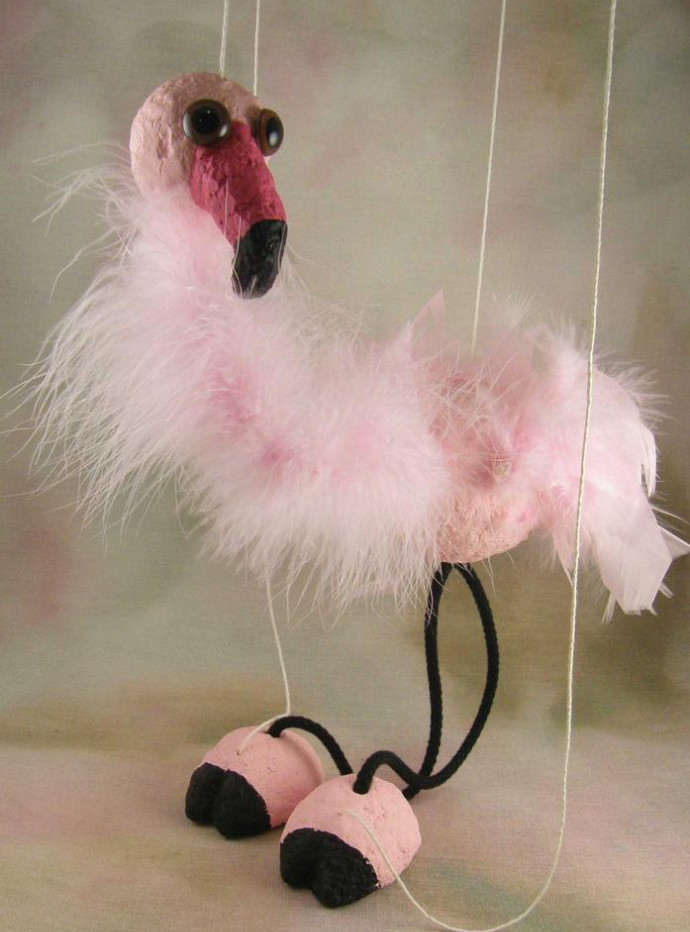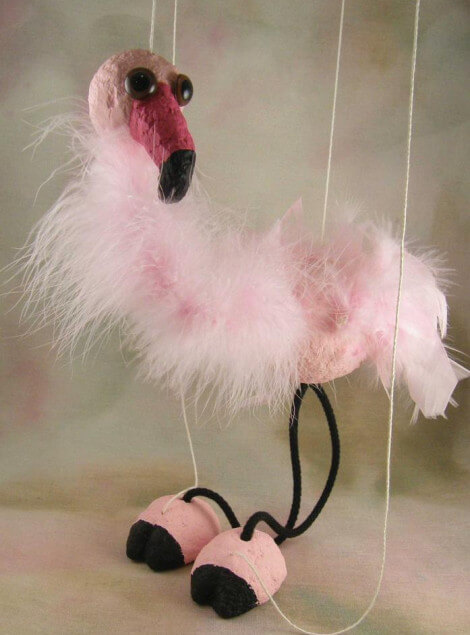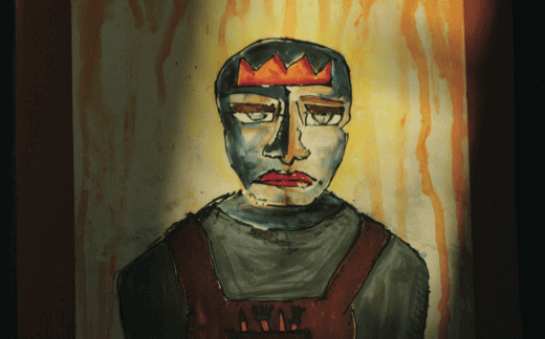Marionettes in Claycrete

Make a Marionette in Claycrete® Instant Papier Maché. Research the history of puppetry and marionettes in particular. Create a working marionette puppet.

Prepare Styrofoam Forms
Use a narrow drinking straw to pierce the Styrofoam shapes. Leave the straw in place as this makes it easy to thread the feet, body and head later on. For each bird, cut one of the smaller Styrofoam balls in half and pierce the two halves from top to bottom to make the feet. For the Flamingo, pierce one large egg from side to side and for the Vulture pierce one large egg from top to bottom. Pierce the second smaller egg or ball side to side for the head.
Apply Claycrete
Mix Claycrete® according to instructions on the packet and cover the Styrofoam pieces for the body, head and feet with Claycrete®. Add some extra Claycrete® to the feet to form two ‘toes’ at the front of each foot. For the Vulture, add a Claycrete® ruffle around the large end of the egg to form the base of the neck. Create a banana shaped beak in Claycrete® on each head. Set aside to dry.
Paint
Flamingo: paint the body, feet and head in light pink. Paint the beak dark pink and the toes and tip of the beak black. Vulture: paint the body black, the neck ruffle in Buttercream. Paint the head and top part of the beak red. Paint the feet and tip of the beak yellow and the toes black. Set aside to dry.
Legs
To make legs, take a 2′ piece of thick black cord for the flamingo and 1′ for the vulture. Push the ends through the holes in the feet from top to bottom and knot the ends.
Feathers
For the flamingo, cut a 10″ piece of feather trim and attach the head to the front of the body to make the bird’s neck. For the vulture, use only 6″ of black feather trim and attach to the head and middle of the ruffle.
Wooden Frame
Form a cross shape with the chopsticks (or dowel) and tie together with string. Add some glue over the string to secure it. Attach two pieces of string, one at each end of one of the chopsticks. Attach one piece of thread through the head and knot in place. Attach the second piece of thread through the body of the marionette, loop around the middle of the cord making the legs and knot in place.
Feet
Attach a piece of string to the front of each foot and attach the other end of the string to either side of the remaining piece of dowel. Adjust the length of these strings so the feet stand level on the floor when the marionette is held by the crossed chopsticks. This step is easier if one person holds the marionette by the rods and another adjusts the strings.
Glue bottle caps to the underside of the marionette’s feet to cover the knots while allowing it to make a tapping sound as it walks.
Eyes and Finishing
Clip off the backing for each animal eye if they are not flat. Glue the eyes to either side of the head facing forward.
Cut two 6″ lengths of feather boa and attach one to each side of the flamingo for wings.



